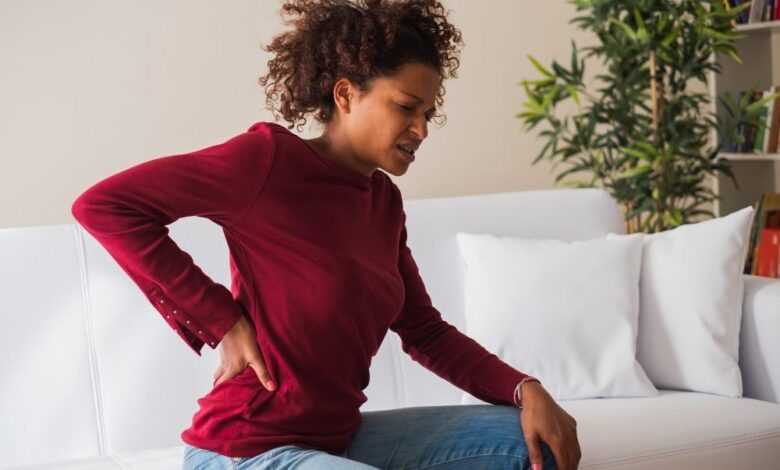Pelvic Pain Relief Strategies And Comprehensive Approaches

A common condition, pelvic pain, affects a lot of people. Many things, including gynecological disorders, musculoskeletal problems, and gastrointestinal diseases cause this pain. Understanding the underlying causes of pelvic issues is crucial for managing and treating pelvic disorders effectively. This article provides comprehensive information on pelvic pain relief. We will provide insight into treatment, diagnostic options, and self-care practices.
Comprehending Pelvic Pain
The pain in the pelvis can either be chronic or acute. The pain is acute and severe. It usually occurs abruptly. Chronic pelvic ache, however, can occur intermittently or continuously and lasts six months or more. Pelvic pain can be hard to diagnose because of its complexity.
Pelvic Pain: What Are The Common Causes?
- Feminological Issues: Pelvic pain is often caused by conditions such as fibroids and endometriosis.
- Urinary Tract problems: Urinary Tract Infections (UTIs), as well as Interstitial Cystitis (painful Bladder Syndrome), can result in significant pelvic distress.
- Musculoskeletal disorder: Pelvic dysfunction can result in pelvic discomfort. Hernias are also a possibility, as well as injuries of the muscles or ligaments.
- Gastrointestinal Diseases: Irritable bowel disorder (IBS), diverticulitis or other gastrointestinal diseases can also cause pelvic symptoms.
Pelvic Pain: A Diagnosis
To diagnose pelvic aches, a complete medical history is required. A variety of tools can be used by doctors to diagnose pelvic pain, such as
- Imaging Studies: Ultrasounds, MRIs, and CT scans allow for the visualization of structures within the pelvis.
- Laparoscopy: This is a minimally invasive operation that allows direct vision of pelvic structures.
- Laboratory tests: Blood tests and urinalysis to diagnose infections.
- Pelvic Exam: This is a thorough exam to evaluate tenderness, lumps, and other abnormalities of the pelvic region.
Pelvic Pain Treatment Options
It is important to treat pelvic pain according to the root cause. This may include lifestyle changes, surgery, or a combination.
Medical Treatments
- Pain Relief: As well as prescription drugs, hormonal therapies (birth control pills, hormone treatment), or over-the-counter pain relief (e.g., Ibuprofen and acetaminophen), you can also take pain medication.
- Antibiotics: When an infection causes the problem, antibiotics may be prescribed.
- Antidepressants: SSRIs or tricyclic antidepressants can effectively manage chronic pain.
Medical Interventions
- Laparoscopy: This is used to diagnose and treat certain conditions, such as endometriosis.
- Neuroblocks: Injections designed to block signals of pain from nerves within the pelvis.
Physical Therapy
Pelvic floor therapy is effective when treating conditions that involve muscle dysfunction. The techniques used by therapists include:
- Manuel Therapy: Techniques to manually manipulate tissues and muscles.
- Biofeedback: The use of sensors helps patients control pelvic muscles.
- Workouts: Stretching, strengthening, and relaxing exercises that are tailored for each individual.
Lifestyle And self-care strategies
Other than medical or surgical treatment, lifestyle modification, and self-care are essential in managing pelvic and uterine pain.
Dietary Modifications
- Anti-inflammatory Diet: Includes foods that decrease inflammation. For example, whole grains or fruits and vegetables.
- Averting Triggers: Identifying foods and beverages that can exacerbate symptoms. Examples include caffeine, alcohol, and spicy foods.
Stress Management
Stress may exacerbate pain in the pelvis, making it important to reduce your stress levels. Techniques include:
- Mindfulness and Meditation: Practices of mindfulness and meditation that reduce stress and promote relaxation.
- Yoga, Tai Chi: Exercises that improve flexibility and strength.
Regular Exercise
Regular physical exercise can alleviate pain while improving your overall well-being. Exercises with low impact such as swimming, cycling and walking are beneficial.
Alternative Treatments
You can find relief in complementary therapy for your pelvic discomfort.
- Acupuncture: Acupuncture is a conventional Chinese medical practice that involves the insertion of small needles into specific locations to alleviate discomfort.
- Chiropractic care: Spinal adjustments, as well as other manual therapies, may help to reduce musculoskeletal discomfort.
- Massage Therapy: A therapeutic massage designed to relieve muscle tension and encourage relaxation.
Seeking Support
This illness may be quite uncomfortable. You can find emotional and psychosocial relief by seeking support from healthcare professionals, support group members, and mental healthcare counsellors. Being able to talk with someone who has been through the same experience as you can provide comfort and empowerment.
Conclusion
For effective treatment, pelvic discomfort is a condition requiring a multifaceted strategy. Knowing the reason is essential to developing a personalized treatment approach. All of these treatments can be used to reduce pain and improve the quality of your life. A healthcare professional can discuss the options with you if your pelvic area is in pain. Finding relief is achievable by embracing a holistic and proactive strategy.






